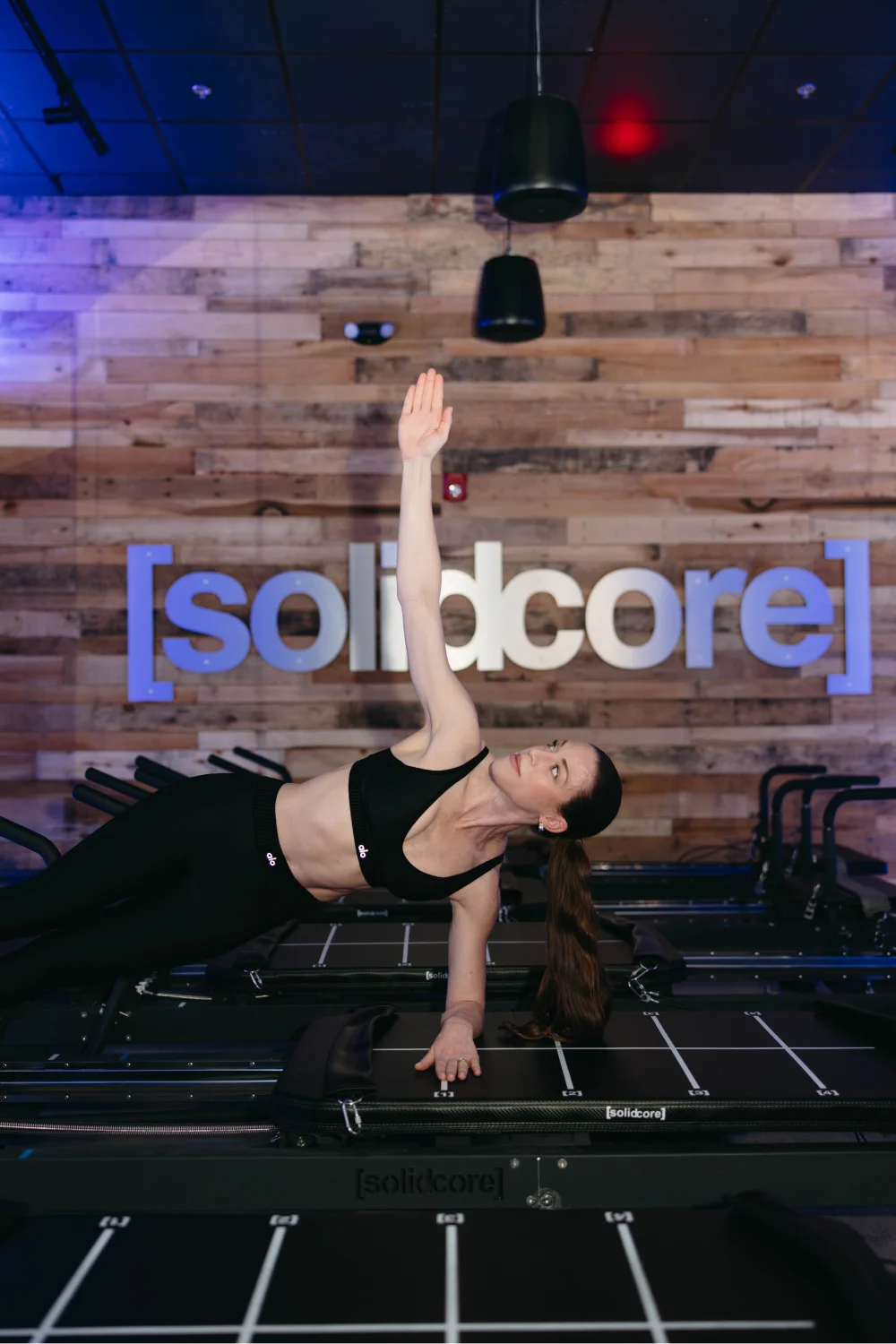The Best Workouts to Strengthen Your Core
By [solidcore]

The core – we love it so much, it’s our name! And if you’ve ever taken a [solidcore] class, you know [solidcore] is one of the most transformational workouts out there for your core.
But what does core strength really mean? And why is it so central to the [solidcore] workout? Whether you’re a beginner or a seasoned client, understanding how core strength drives results in [solidcore] can elevate your performance and prevent injury.
In this article, we’ll dive deep into the importance of core strength, how [solidcore] uniquely develops it, and how a stronger core benefits your body both in and out of class.
What are the core muscles?
Strong core muscles are essential for balance, posture, and injury prevention.
When most people think of the "core," they picture the abdominal muscles, but the core actually involves much more:
Your rectus abdominis ("six-pack" muscles)
Your obliques (side ab muscles)
Your transverse abdominis (deep internal stabilizing muscles)
Your erector spinae (muscles along the spine)
Your pelvic floor muscles
Your diaphragm
Your glutes and hip stabilizers
How [solidcore] builds core strength like no other workout
What sets [solidcore] apart is our targeted, science-backed approach to strengthening your core.
The super-slow pace of [solidcore] exercises forces your core to work overtime to stabilize the body against the resistance of the machine. And constant time under tension means your muscles are challenged continuously for extended periods.
What’s more, during [solidcore], you activate your core in all directions. Even the tiniest carriage movements require intense core engagement to maintain control.
Here's why core strength is essential to your [solidcore] experience:
Control and stability:
Slow movements require your core to stabilize your entire body as you move slowly through different ranges of motion.
Full-body integration:
Nearly every [solidcore] exercise, whether it's focused on arms, glutes, or legs, demands core activation to support and maintain alignment.
Supporting your spine:
A strong core helps protect your spine, reducing the risk of back strain or injury.
Balance and coordination:
Core strength allows you to maintain control, proper form, and balance.
Increased muscle efficiency:
When your core is engaged, you recruit the use of more muscles, increasing the effectiveness of each movement.
What are the best [solidcore] exercises for your core?
Core exercises

Plank
Plank crunch
Plank to pike
Plank extension
Deadbug
Core exercises that also work your upper body:

Army crawl
Plank up down
Push up
Kneeling triceps press
Straight arm crunch
Seated chest fly with crunch
What about the lower body? Lower body exercises often require core stabilization to maintain balance, posture, and power. The deeper the range of motion and the heavier the resistance, the more your core has to fire up. Think – squats, lunges, deadlifts, glute bridges, and bulgarian split squats.
How to maximize your core engagement in [solidcore]
To get the most out of every class, keep these four tips in mind:
Focus on form over speed. Slower is stronger.
Breathe. Exhale during the effort phase of each movement; proper breathing supports core stability and more efficient muscle recruitment.
Visualize your core working hard. This helps develop increased neuromuscular strength, or in other words, mind-to-body connection! It really works, trust us!
Keep your hips square and spine neutral. Avoid arching or twisting unless that’s part of the exercise.
Core exercises you can try at home
If you can’t make it to your usual [solidcore] class, don’t worry! You can keep your core strong through these at-home activities. When you get back into the studio, you’ll be able to jump right back into where you were before:

Plank (and variations): front, side, forearm, reverse
Bird Dog
Dead Bug
Suitcase crunch
Glute Bridge March
Hollow Body Hold
Superman Hold
The benefits of a strong core
Building core strength through [solidcore] doesn’t just benefit you in class. It also enhances your daily life and overall health.
A strong core improves your posture, reducing back and neck pain. Many chronic back issues stem from weak core muscles; strengthening them can help you reduce or prevent pain, and reduce your risk of injury.
You’ll also find that as you strengthen your core, you have better balance and coordination. As we age, great balance is super important. If you do other workouts or sports, you’ll notice that your strong core muscles help your performance in things like running, swimming, and cycling.
Whether it’s your first class or your hundredth, every [solidcore] class is an opportunity to strengthen your core and unlock new levels of strength. So the next time you’re holding that plank and you feel your core muscles working hard, you’ll know exactly why it matters for your lifelong health journey.
Are you ready to start strengthening your core? Find a studio near you!